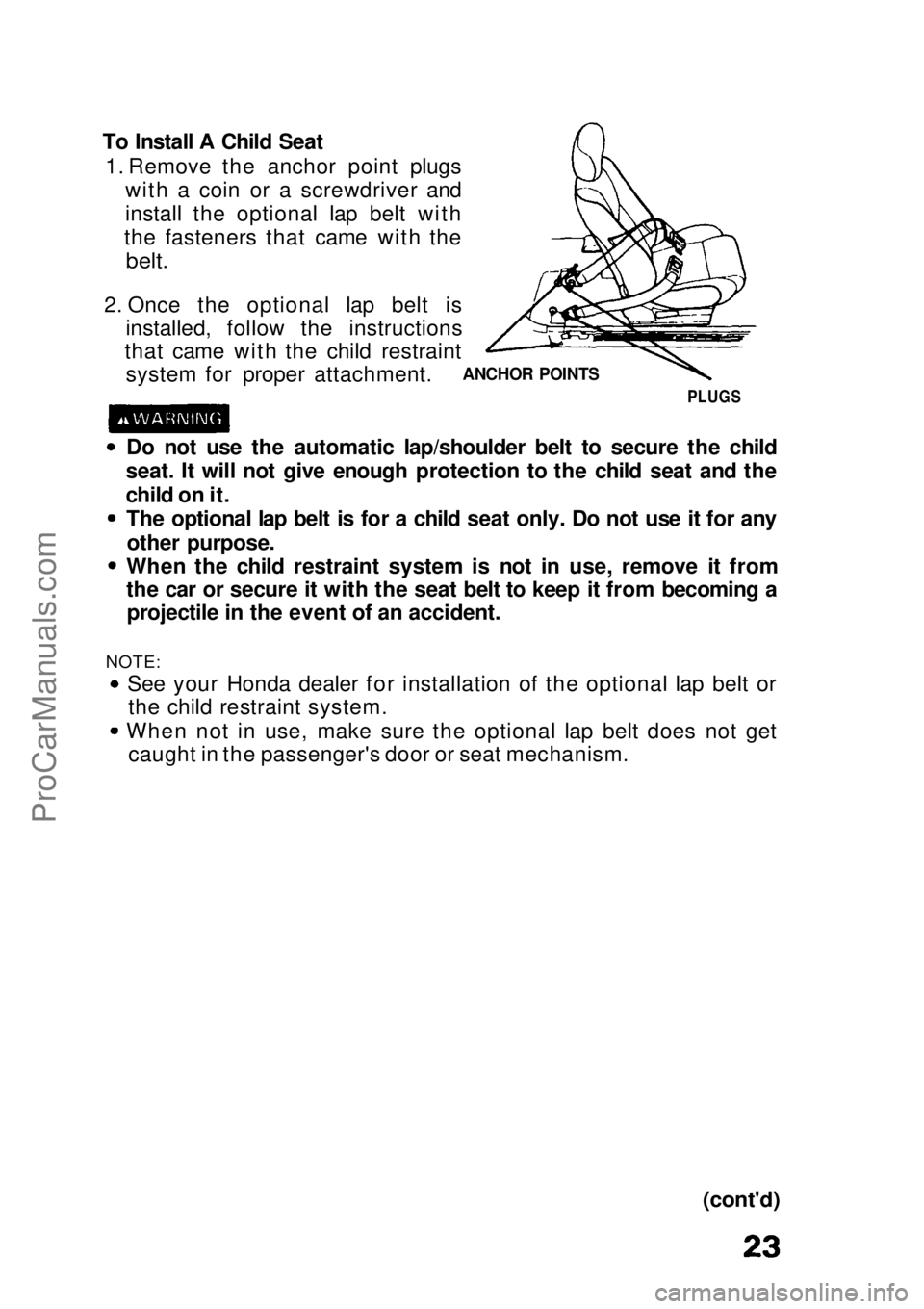Page 17 of 136
Seat Belts (cont'd)
Avoid placing the lap belt across your abdomen. In the event ofa collision, the pressure of the belt on the abdomen may
increase the extent of injury. Do not wear the shoulder portion of the belt under your arm or
out of position. Such use could increase the chance and amount
of injury in an accident.
Never use one belt for more than one person, child or adult. Comfort clips sold on the open market are not recommended
since they could impair the function and safety of the belts.
Emergency Belt Release
The front belts should remain permanently latched. However, an emergency release button is provided as shown.
EMERGENCY
RELEASE BUTTON TONGUE PLATE
BUCKLE
Too high
Keep below hip boneProCarManuals.comMain Menu s t
Page 18 of 136
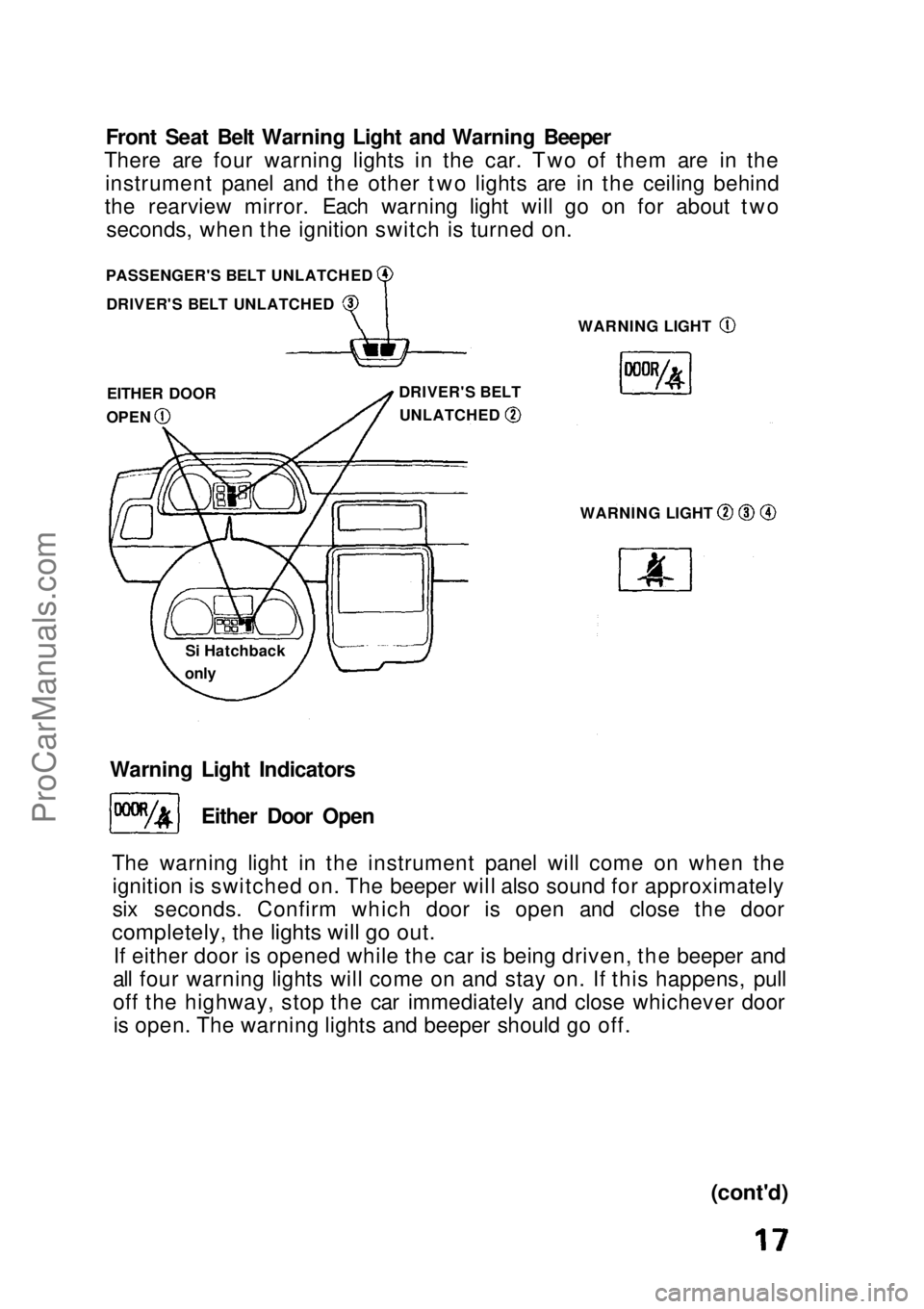
Front Seat Belt Warning Light and Warning Beeper
There are four warning lights in the car. Two of them are in the instrument panel and the other two lights are in the ceiling behind
the rearview mirror. Each warning light will go on for about two seconds, when the ignition switch is turned on.
Warning Light Indicators Either Door Open
The warning light in the instrument panel will come on when the ignition is switched on. The beeper will also sound for approximately
six seconds. Confirm which door is open and close the door
completely, the lights will go out.
If either door is opened while the car is being driven, the beeper and
all four warning lights will come on and stay on. If this happens, pull
off the highway, stop the car immediately and close whichever door is open. The warning lights and beeper should go off.
(cont'd)
PASSENGER'S BELT UNLATCHED
DRIVER'S BELT UNLATCHED WARNING LIGHT
DRIVER'S BELT UNLATCHED
EITHER DOOR
OPEN
WARNING LIGHT
Si Hatchback
onlyProCarManuals.comMain Menu s t
Page 19 of 136
Seat Belts (cont'd)
Driver's Belt Unlatched
The warning lights in the ceiling and in the instrument panel will come on and stay on if the driver's belt is not latched. The beeper
will sound for approximately six seconds when the ignition is turned
on. Relatch the belt; the light should go off.
Front Passenger's Belt Unlatched
The warning light in the ceiling will come on and stay on if the front passenger's seat belt is not securely latched, the beeper sound for
approximately six seconds. Relatch the belt; the light should go off.
If the lights and beeper do not function at all or if they come on
even with the belts latched and doors fully closed, it indicates a malfunction in the seat belt system. In the event of a collission,
severe personal injury could result. The system should be checked
immediately by an authorized Honda dealer.ProCarManuals.comMain Menu s t
Page 20 of 136
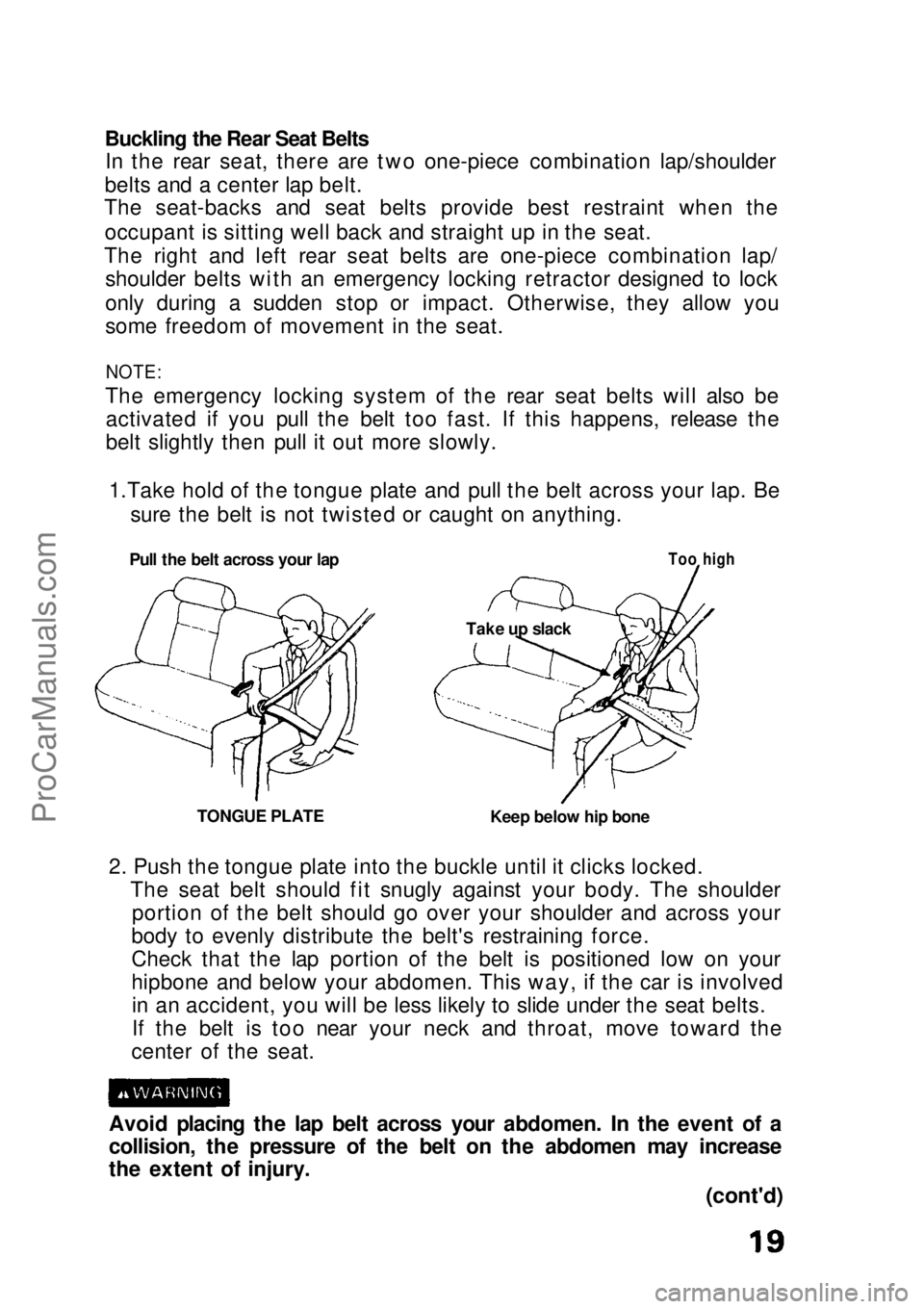
Buckling the Rear Seat Belts
In the rear seat, there are two one-piece combination lap/shoulder
belts and a center lap belt.
The seat-backs and seat belts provide best restraint when the
occupant is sitting well back and straight up in the seat.
The right and left rear seat belts are one-piece combination lap/ shoulder belts with an emergency locking retractor designed to lock
only during a sudden stop or impact. Otherwise, they allow you
some freedom of movement in the seat.
NOTE:
The emergency locking system of the rear seat belts will also be activated if you pull the belt too fast. If this happens, release the
belt slightly then pull it out more slowly.
1.Take hold of the tongue plate and pull the belt across your lap. Be sure the belt is not twisted or caught on anything.
2. Push the tongue plate into the buckle until it clicks locked. The seat belt should fit snugly against your body. The shoulderportion of the belt should go over your shoulder and across your
body to evenly distribute the belt's restraining force.
Check that the lap portion of the belt is positioned low on your
hipbone and below your abdomen. This way, if the car is involved in an accident, you will be less likely to slide under the seat belts.
If the belt is too near your neck and throat, move toward the
center of the seat.
Avoid placing the lap belt across your abdomen. In the event of a
collision, the pressure of the belt on the abdomen may increase
the extent of injury.
(cont'd)
Pull the belt across your lap
TONGUE PLATE
Too high
Take up slack
Keep below hip bone
ProCarManuals.comMain Menu s t
Page 21 of 136
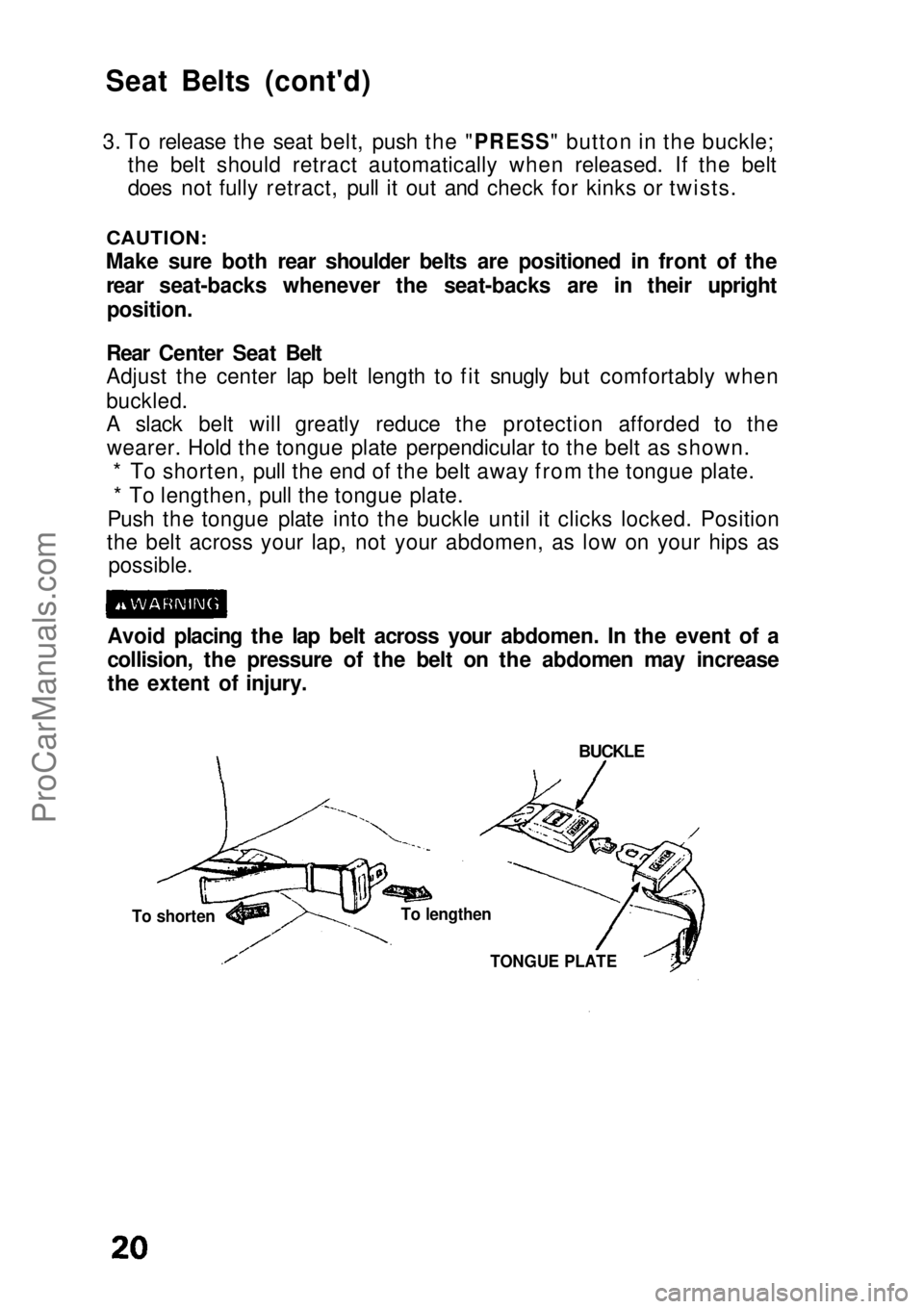
Seat Belts (cont'd)
3. To release the seat belt, push the "PRESS" button in the buckle;
the belt
should retract automatically when released. If the belt
does not fully retract, pull it out and check for kinks or twists.
CAUTION:
Make sure both rear shoulder belts are positioned in front of the rear seat-backs whenever the seat-backs are in their upright
position.
Rear Center Seat Belt
Adjust the center lap belt length to fit snugly but comfortably when
buckled.
A slack belt will greatly reduce the protection afforded to the wearer. Hold the tongue plate perpendicular to the belt as shown. * To shorten, pull the end of the belt away from the tongue plate.
* To lengthen, pull the tongue plate.
Push the tongue plate into the buckle until it clicks locked. Position
the belt across your lap, not your abdomen, as low on your hips as possible.
Avoid placing the lap belt across your abdomen. In the event of a
collision, the pressure of the belt on the abdomen may increase
the extent of injury.
BUCKLE
To lengthen
To shorten
TONGUE PLATEProCarManuals.comMain Menu s t
Page 22 of 136
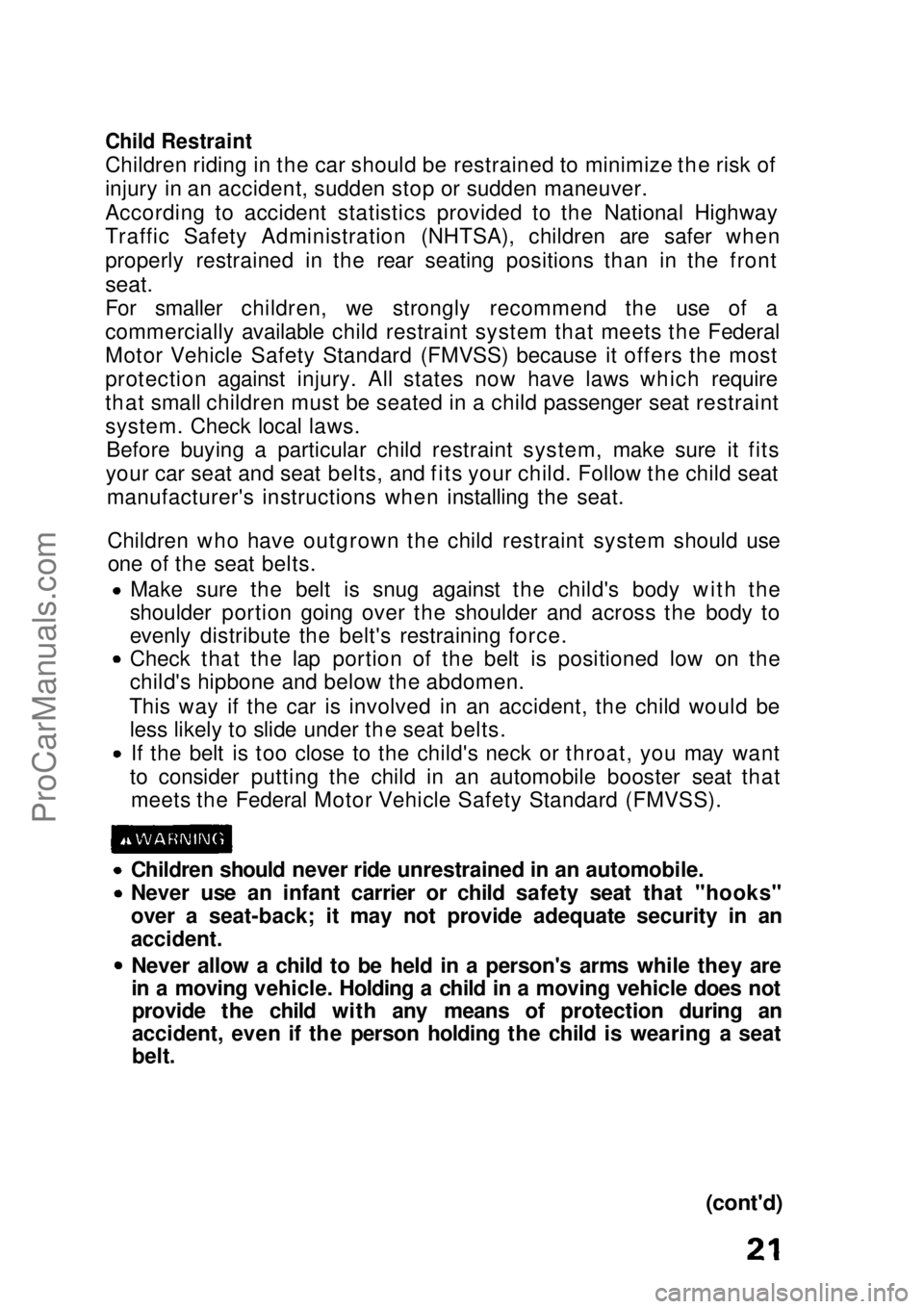
Child Restraint
Children riding in the car should be restrained to minimize the risk of
injury in an accident, sudden stop or sudden maneuver.
According to accident statistics provided to the National Highway
Traffic Safety Administration (NHTSA), children are safer when
properly restrained in the rear seating positions than in the front
seat.
For smaller children, we strongly recommend the use of a
commercially available child restraint system that meets the Federal
Motor Vehicle Safety Standard (FMVSS) because it offers the most
protection against injury. All states now have laws which require
that small children must be seated in a child passenger seat restraint
system. Check local laws.
Before buying a particular child restraint system, make sure it fits
your car seat and seat belts, and fits your child. Follow the child seat manufacturer's instructions when installing the seat.
Children who have outgrown the child restraint system should useone of the seat belts.
Make sure the belt is snug against the child's body with the
shoulder portion going over the shoulder and across the body to
evenly distribute the belt's restraining force.
Check that the lap portion of the belt is positioned low on the
child's hipbone and below the abdomen.
This way if the car is involved in an accident, the child would be less likely to slide under the seat belts. If the belt is too close to the child's neck or throat, you may want
to consider putting the child in an automobile booster seat that meets the Federal Motor Vehicle Safety Standard (FMVSS).
Children should never ride unrestrained in an automobile.
Never use an infant carrier or child safety seat that "hooks"
over a seat-back; it may not provide adequate security in an
accident. Never allow a child to be held in a person's arms while they are
in a moving vehicle. Holding a child in a moving vehicle does not
provide the child with any means of protection during an
accident, even if the person holding the child is wearing a seat
belt.
(cont'd)ProCarManuals.comMain Menu s t
Page 23 of 136
Seat Belts (cont'd)
[Hatchback]
Installation of Child Seat
All child restraint systems are designed to be secured by lap belts or
the lap belt portion of a lap-shoulder belt. Children could be endangered in a crash, if their child restraints are not properlysecured. Follow the child seat manufacturer's instructions when
installing the seat.
Your Honda automobile is equipped with attachment points
specifically for a rear seat mounted child restraint system which
uses a top tether.
The tether attachment points are located on the rear panel beside
the taillight bulb inspection cover.
The automatic lap/shoulder restraint system at the front passengerseat cannot be used to secure a child restraint system. Instead, an
optional lap belt must be installed specifically for securing a child restraint system. Two anchor points have been provided behind the
front passenger seat for installation. The optional lap belt is available
from your Honda dealer.ProCarManuals.comMain Menu s t
Page 24 of 136
To Install A Child Seat
1. Remove the anchor point plugs with a coin or a screwdriver and
install the optional lap belt with
the fasteners that came with the
belt.
2. Once the optional lap belt is installed, follow the instructions
that came with the child restraint system for proper attachment.
Do not use the automatic lap/shoulder belt to secure the child
seat. It will not give enough protection to the child seat and the
child on it. The optional lap belt is for a child seat only. Do not use it for any
other purpose. When the child restraint system is not in use, remove it from
the car or secure it with the seat belt to keep it from becoming a
projectile in the event of an accident.
NOTE: See your Honda dealer for installation of the optional lap belt orthe child restraint system. When not in use, make sure the optional lap belt does not get
caught in the passenger's door or seat mechanism.
(cont'd)
ANCHOR POINTS
PLUGSProCarManuals.comMain Menu s t
 1
1 2
2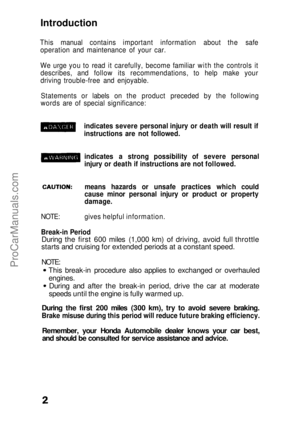 3
3 4
4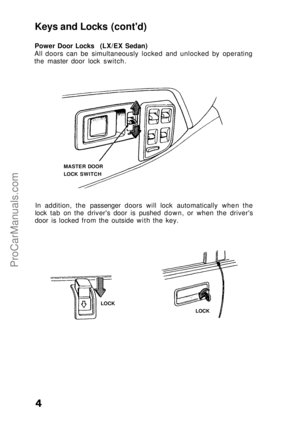 5
5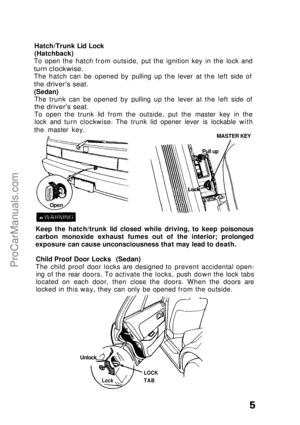 6
6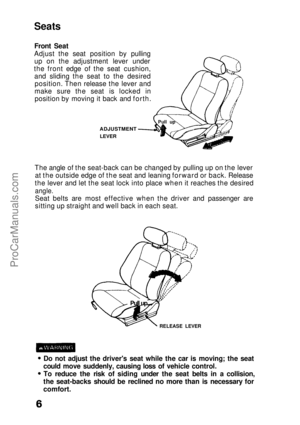 7
7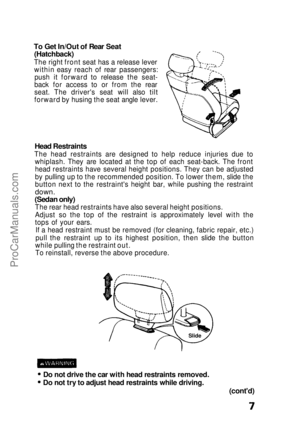 8
8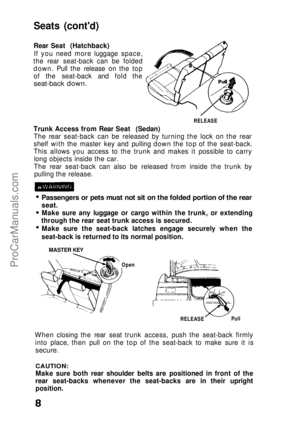 9
9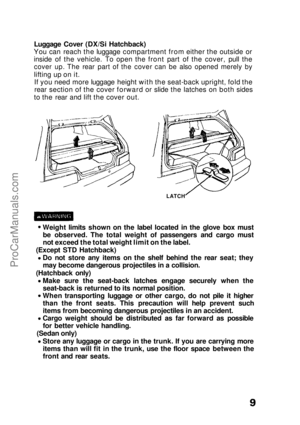 10
10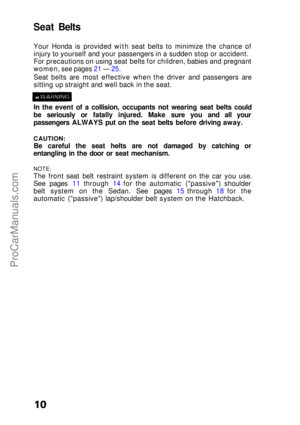 11
11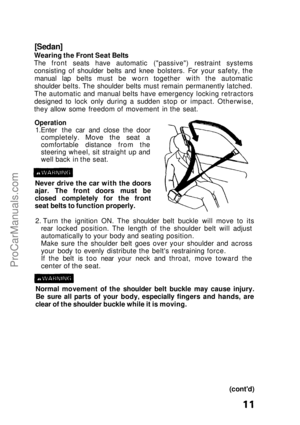 12
12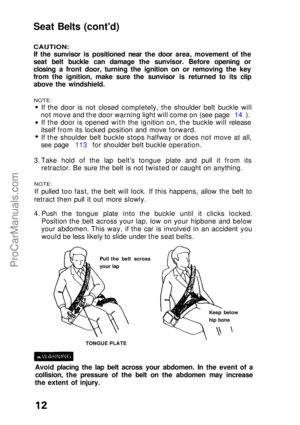 13
13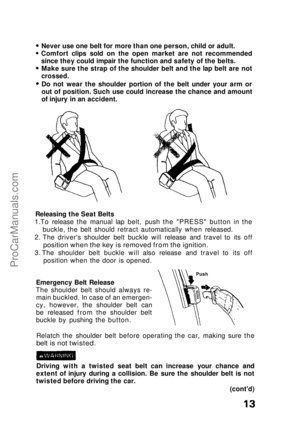 14
14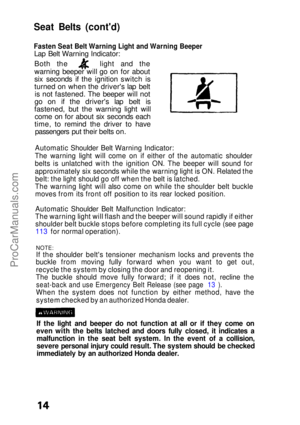 15
15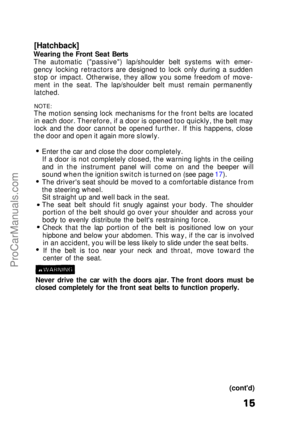 16
16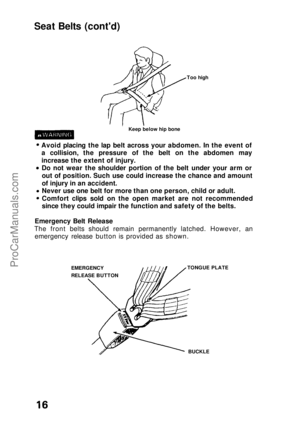 17
17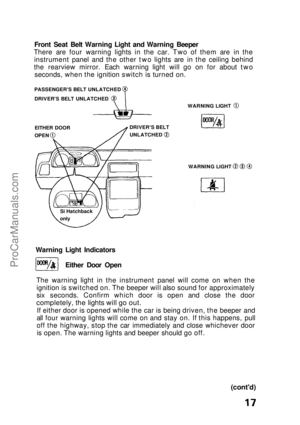 18
18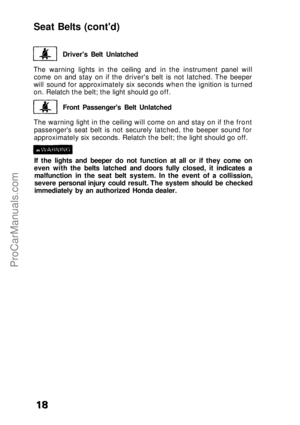 19
19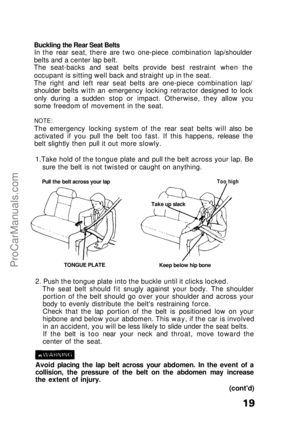 20
20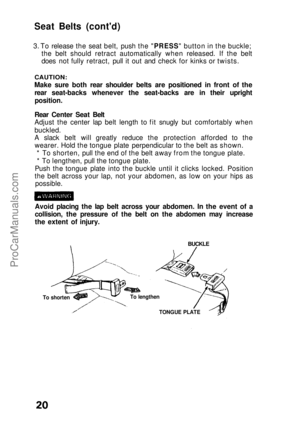 21
21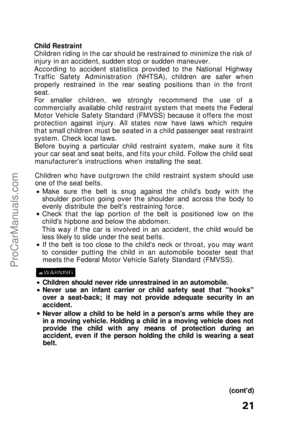 22
22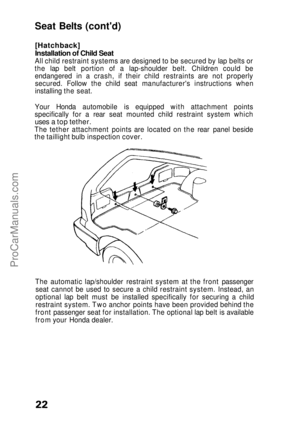 23
23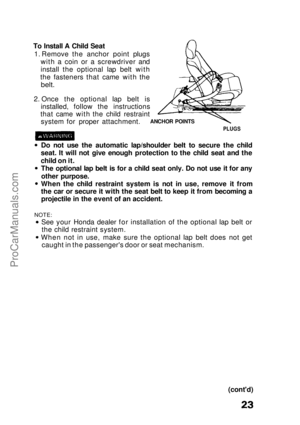 24
24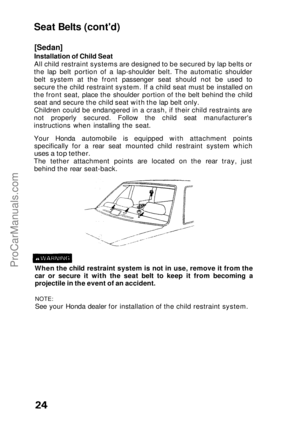 25
25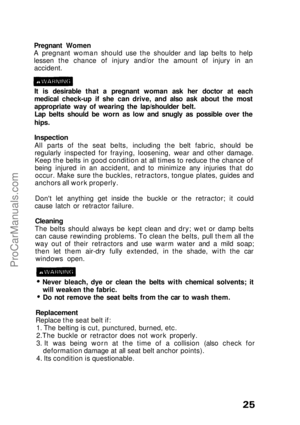 26
26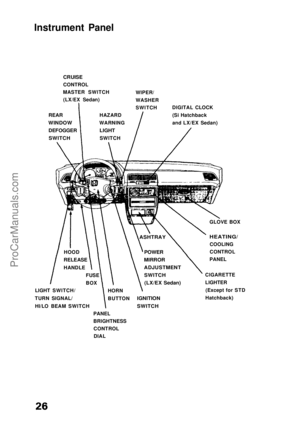 27
27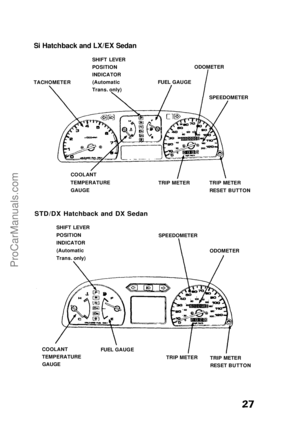 28
28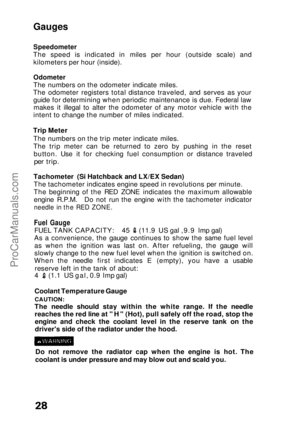 29
29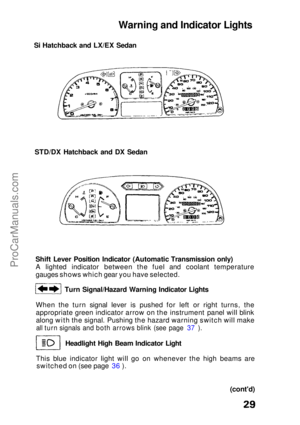 30
30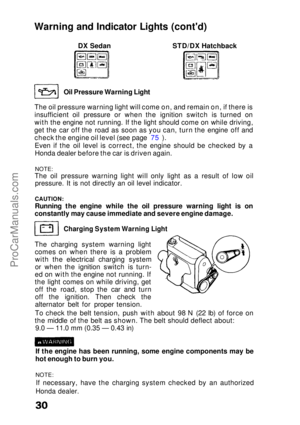 31
31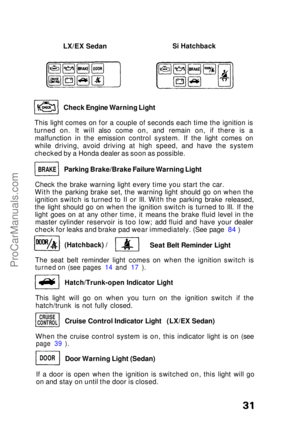 32
32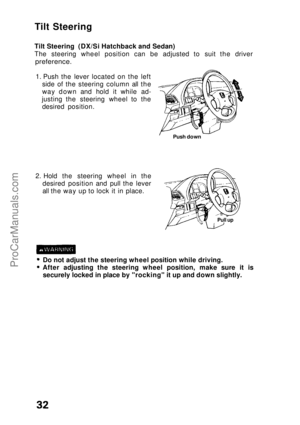 33
33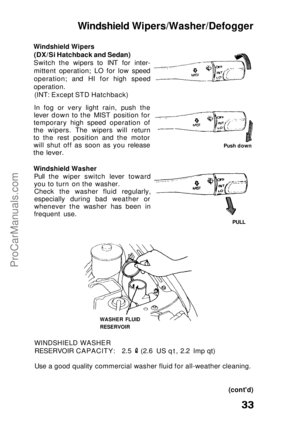 34
34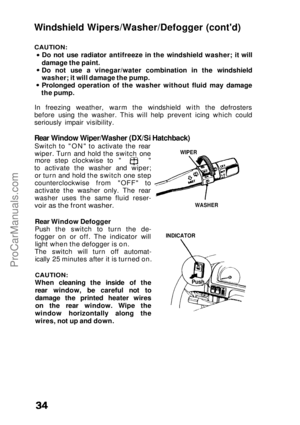 35
35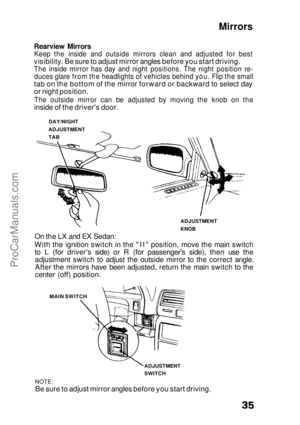 36
36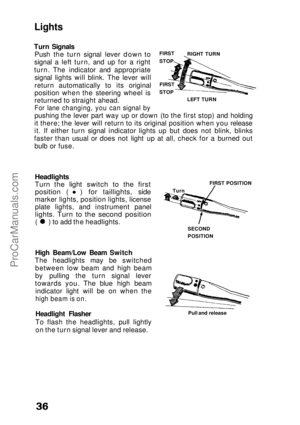 37
37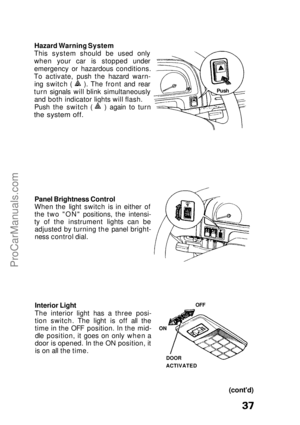 38
38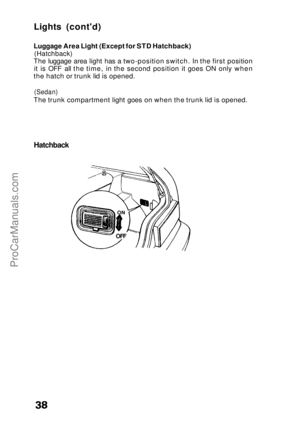 39
39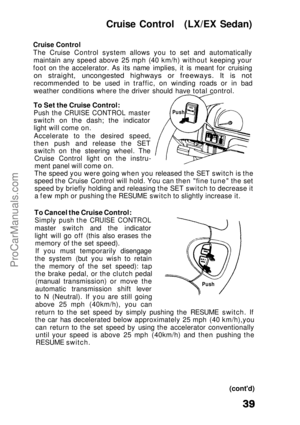 40
40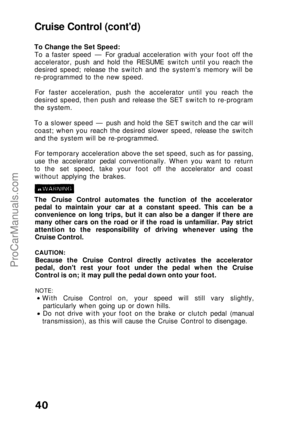 41
41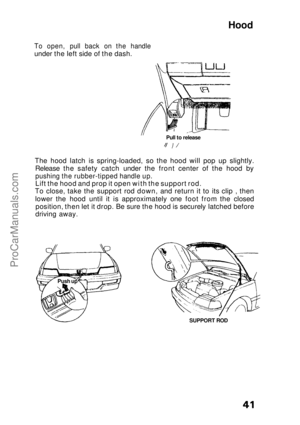 42
42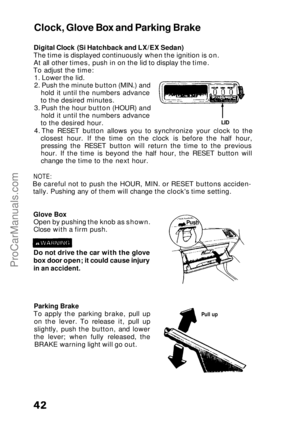 43
43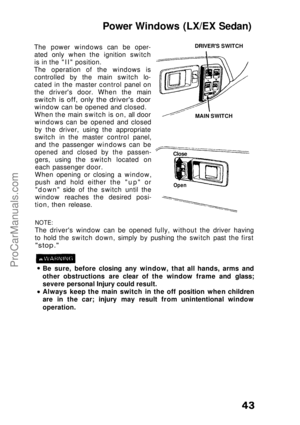 44
44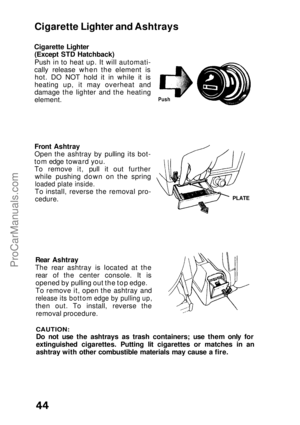 45
45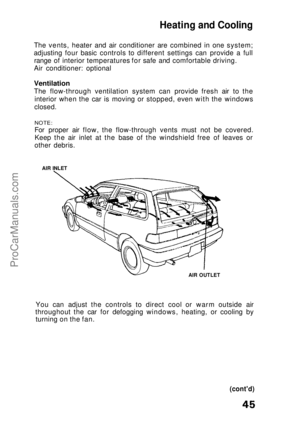 46
46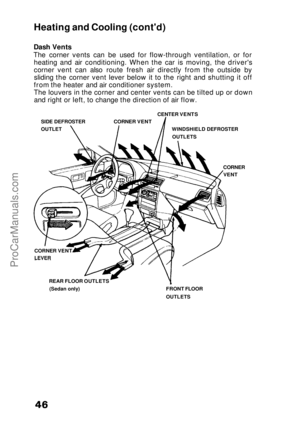 47
47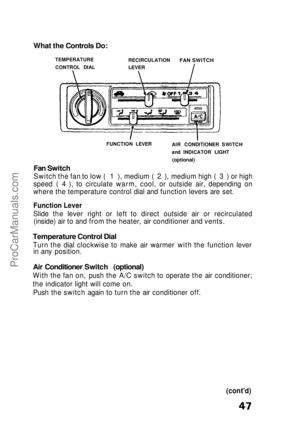 48
48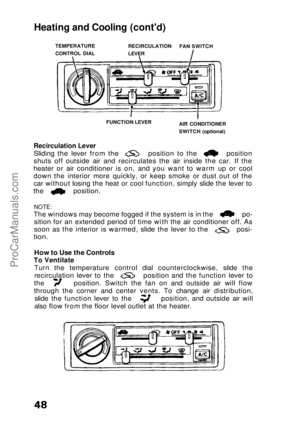 49
49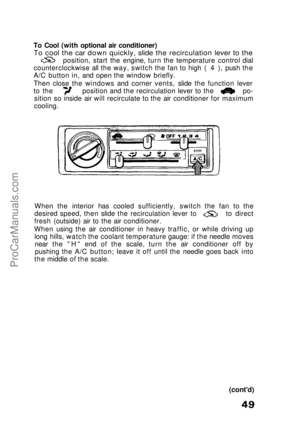 50
50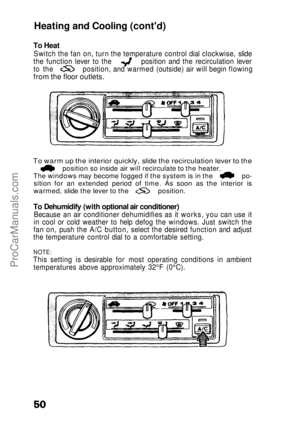 51
51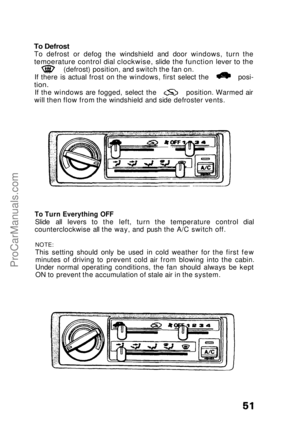 52
52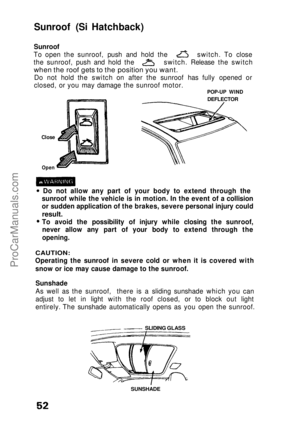 53
53 54
54 55
55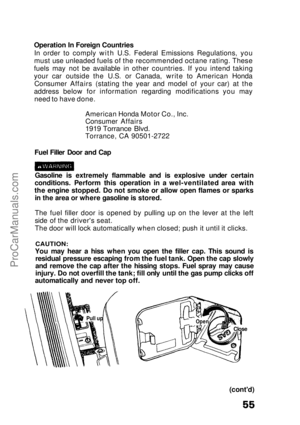 56
56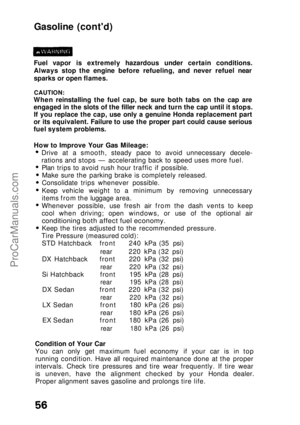 57
57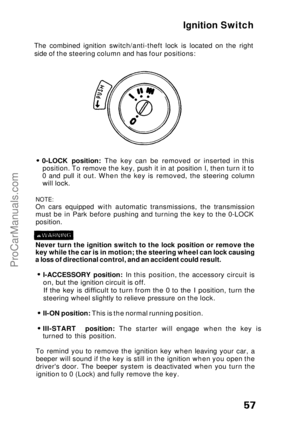 58
58 59
59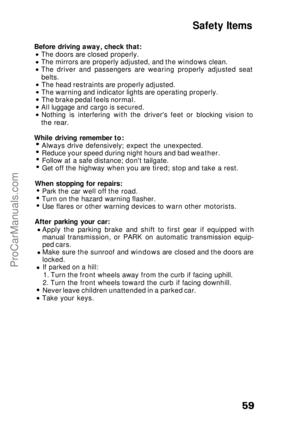 60
60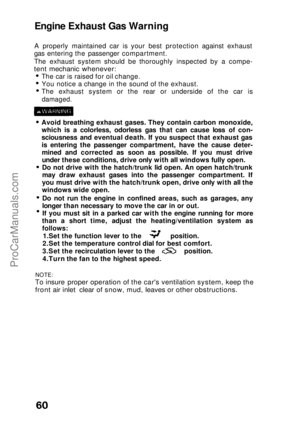 61
61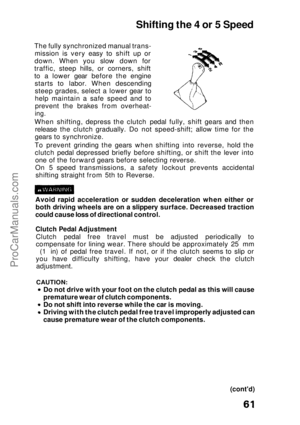 62
62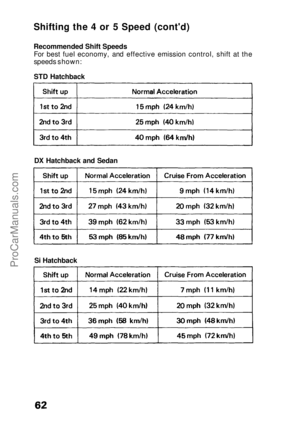 63
63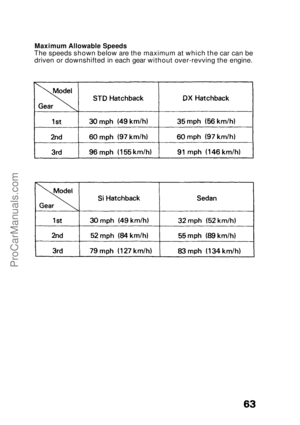 64
64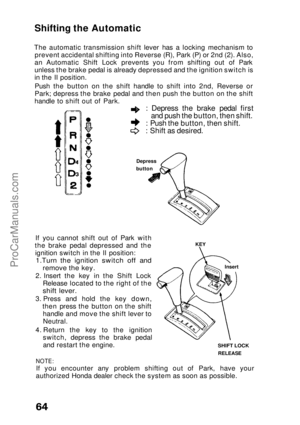 65
65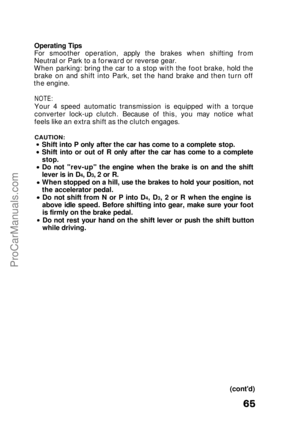 66
66 67
67 68
68 69
69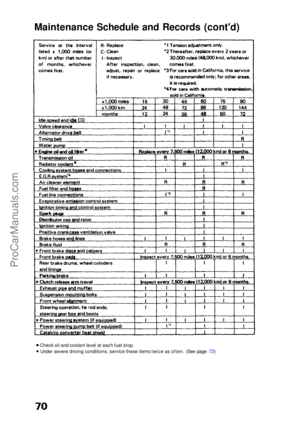 70
70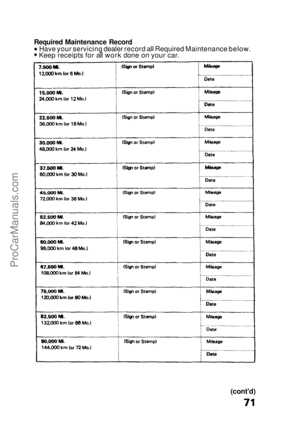 71
71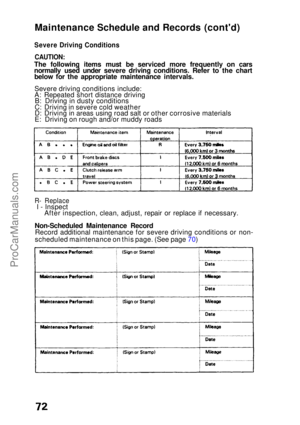 72
72 73
73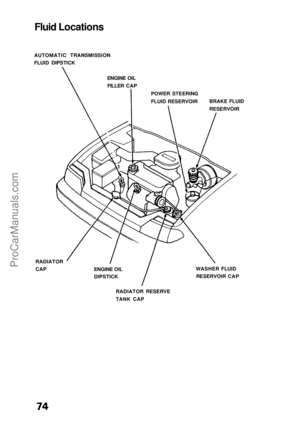 74
74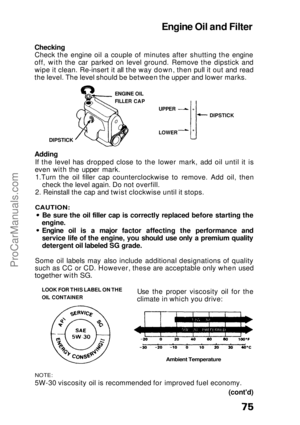 75
75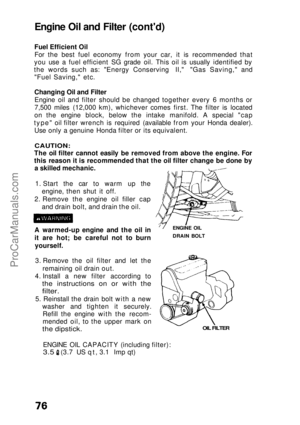 76
76 77
77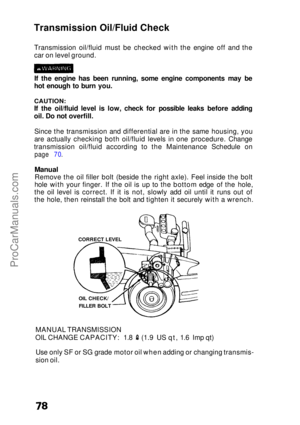 78
78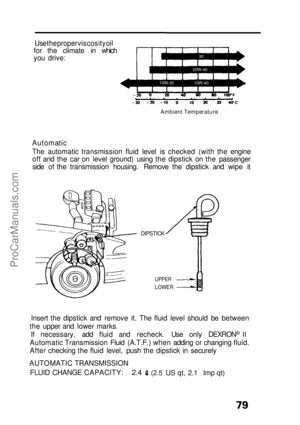 79
79 80
80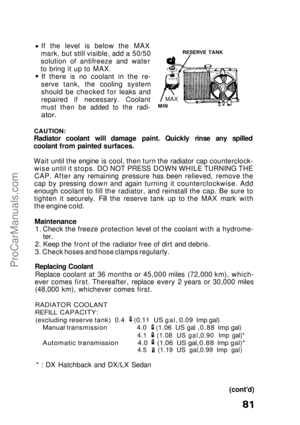 81
81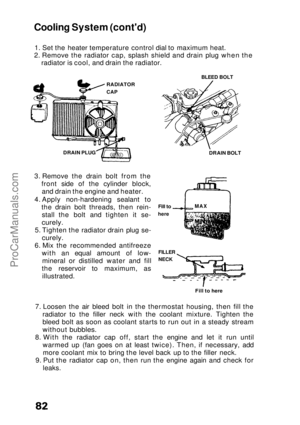 82
82 83
83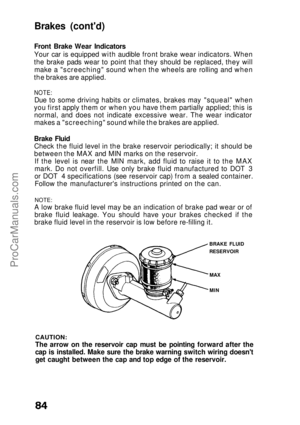 84
84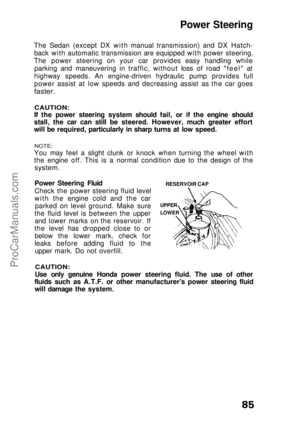 85
85 86
86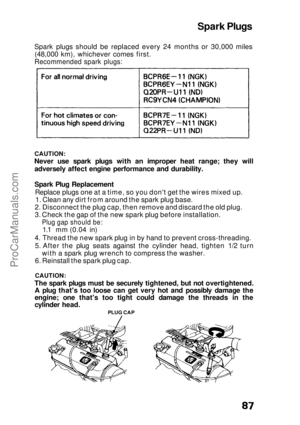 87
87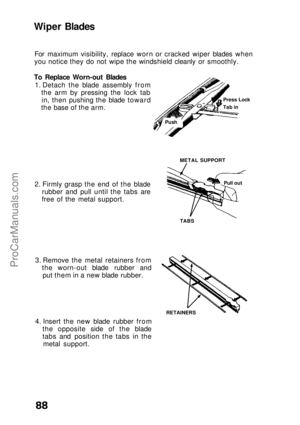 88
88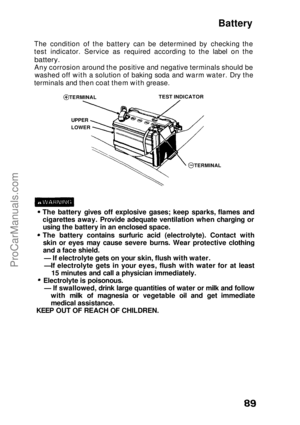 89
89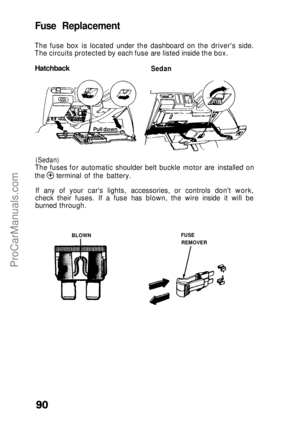 90
90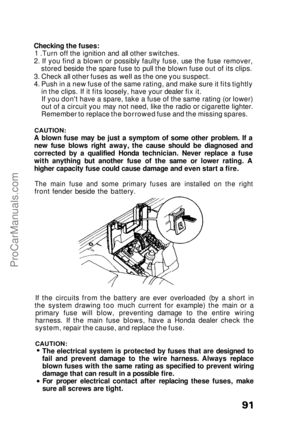 91
91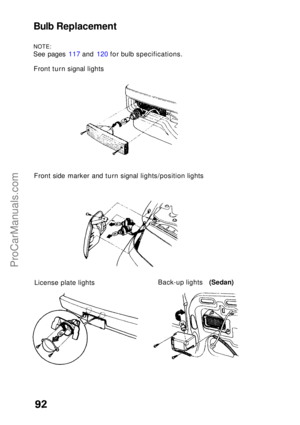 92
92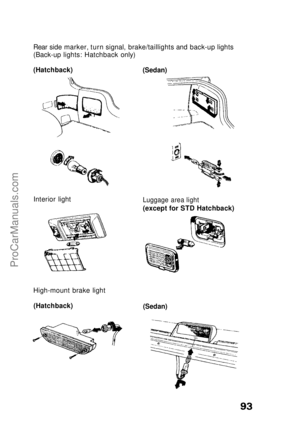 93
93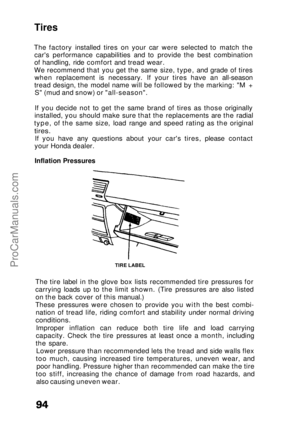 94
94 95
95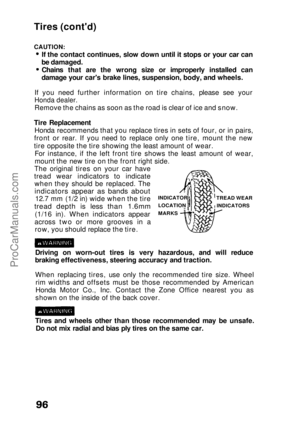 96
96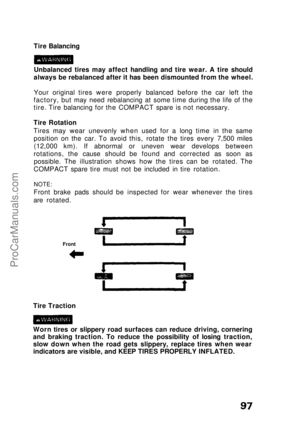 97
97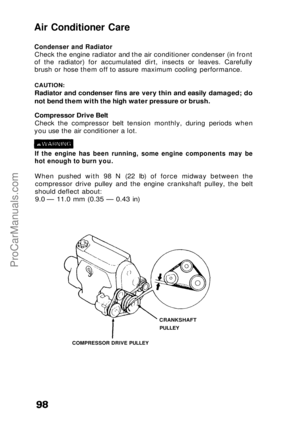 98
98 99
99 100
100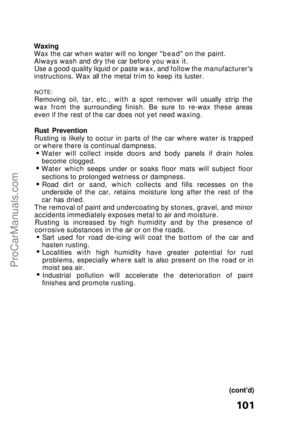 101
101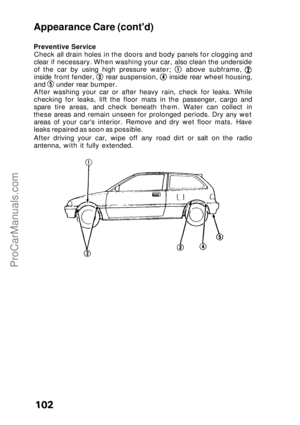 102
102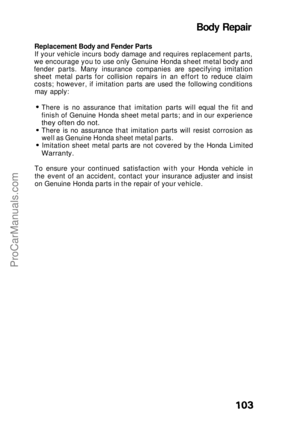 103
103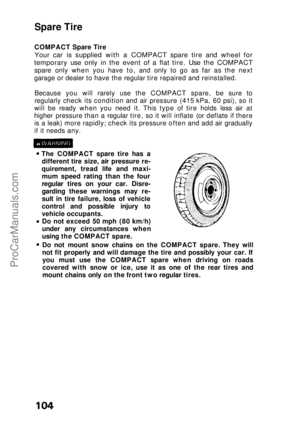 104
104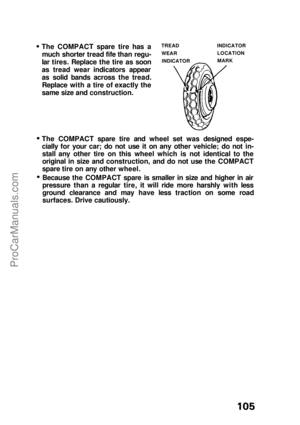 105
105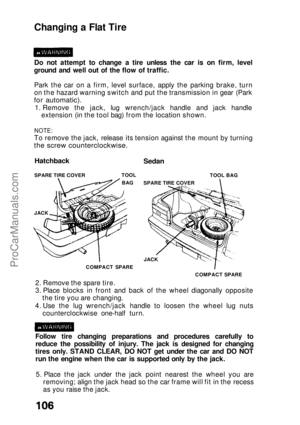 106
106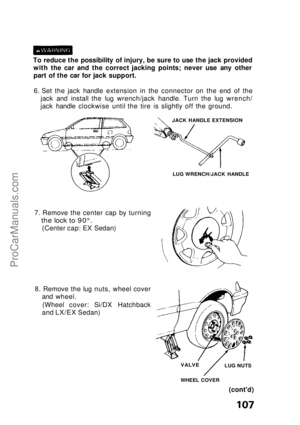 107
107 108
108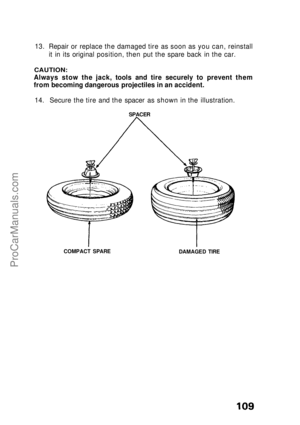 109
109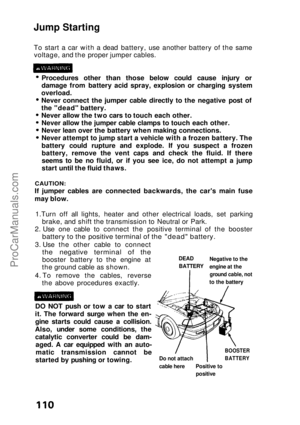 110
110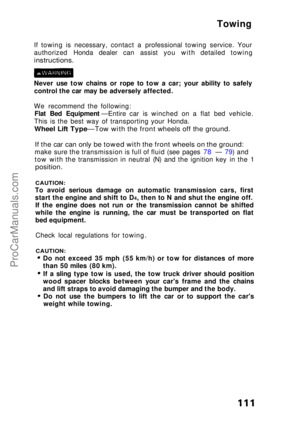 111
111 112
112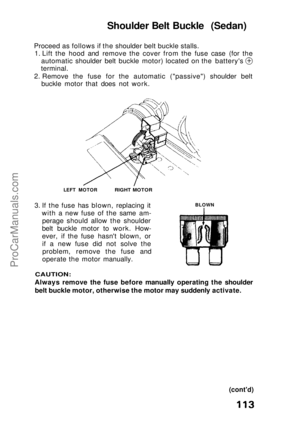 113
113 114
114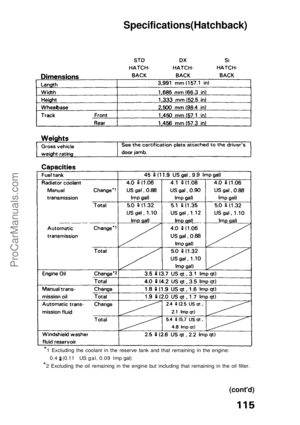 115
115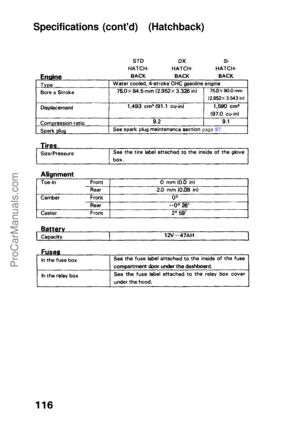 116
116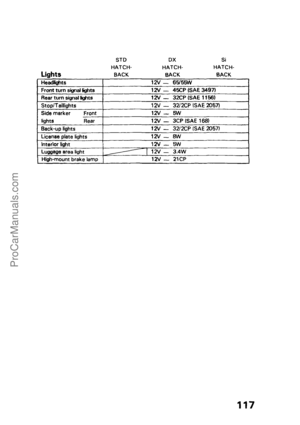 117
117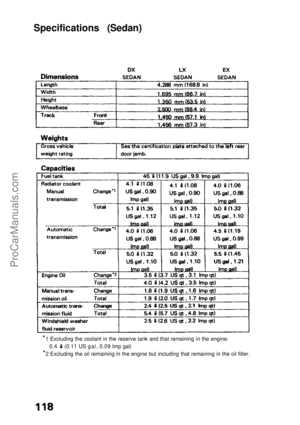 118
118 119
119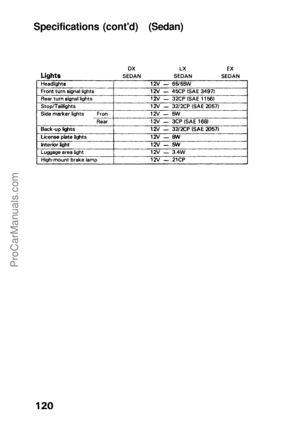 120
120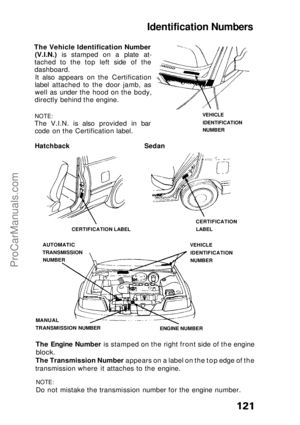 121
121 122
122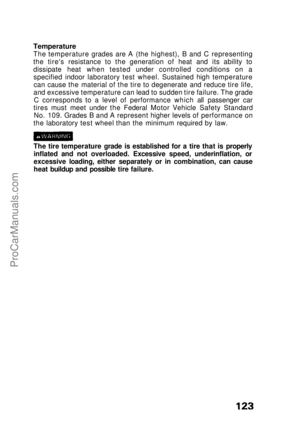 123
123 124
124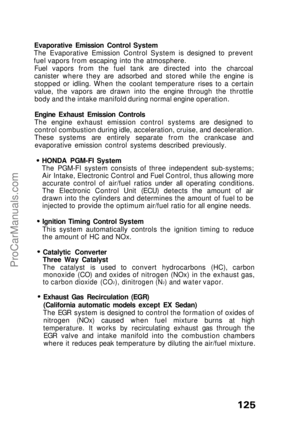 125
125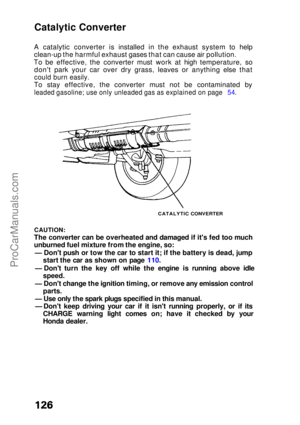 126
126 127
127 128
128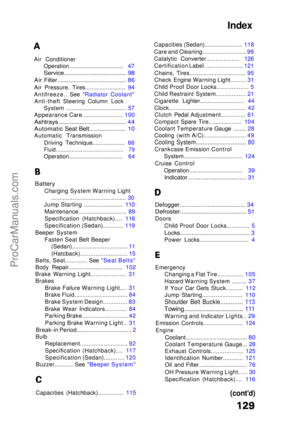 129
129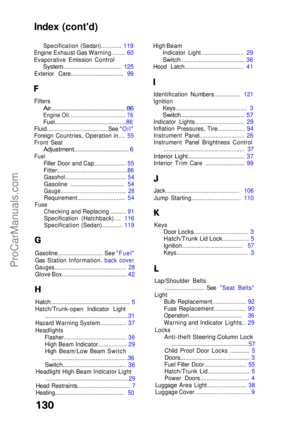 130
130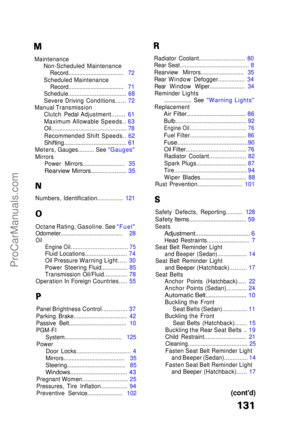 131
131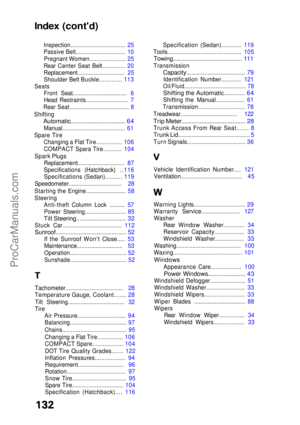 132
132 133
133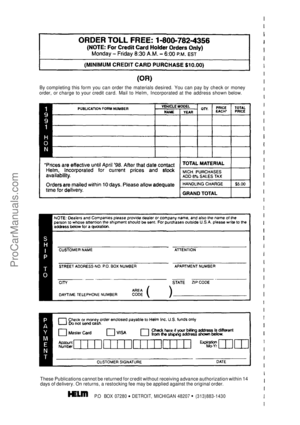 134
134 135
135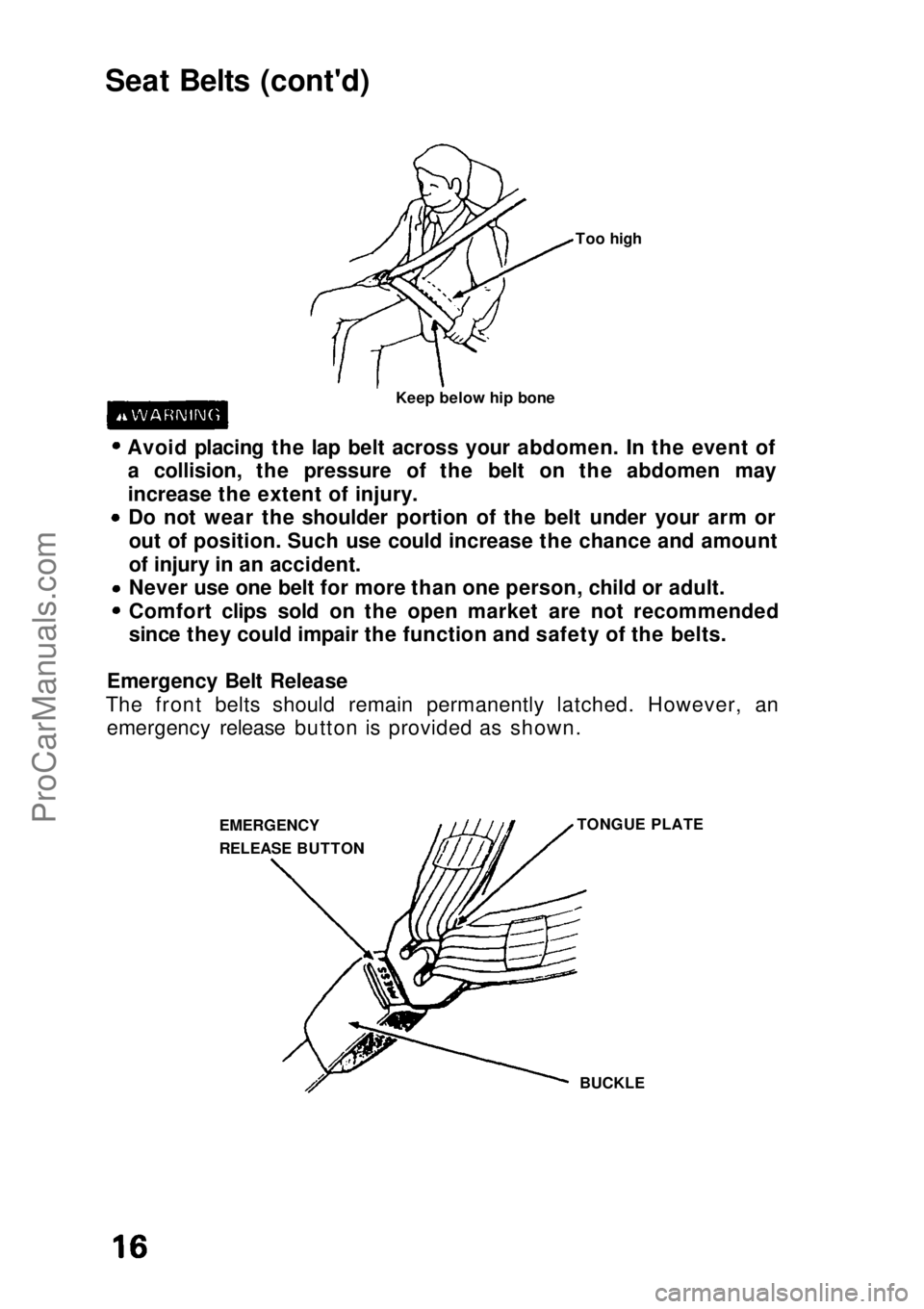

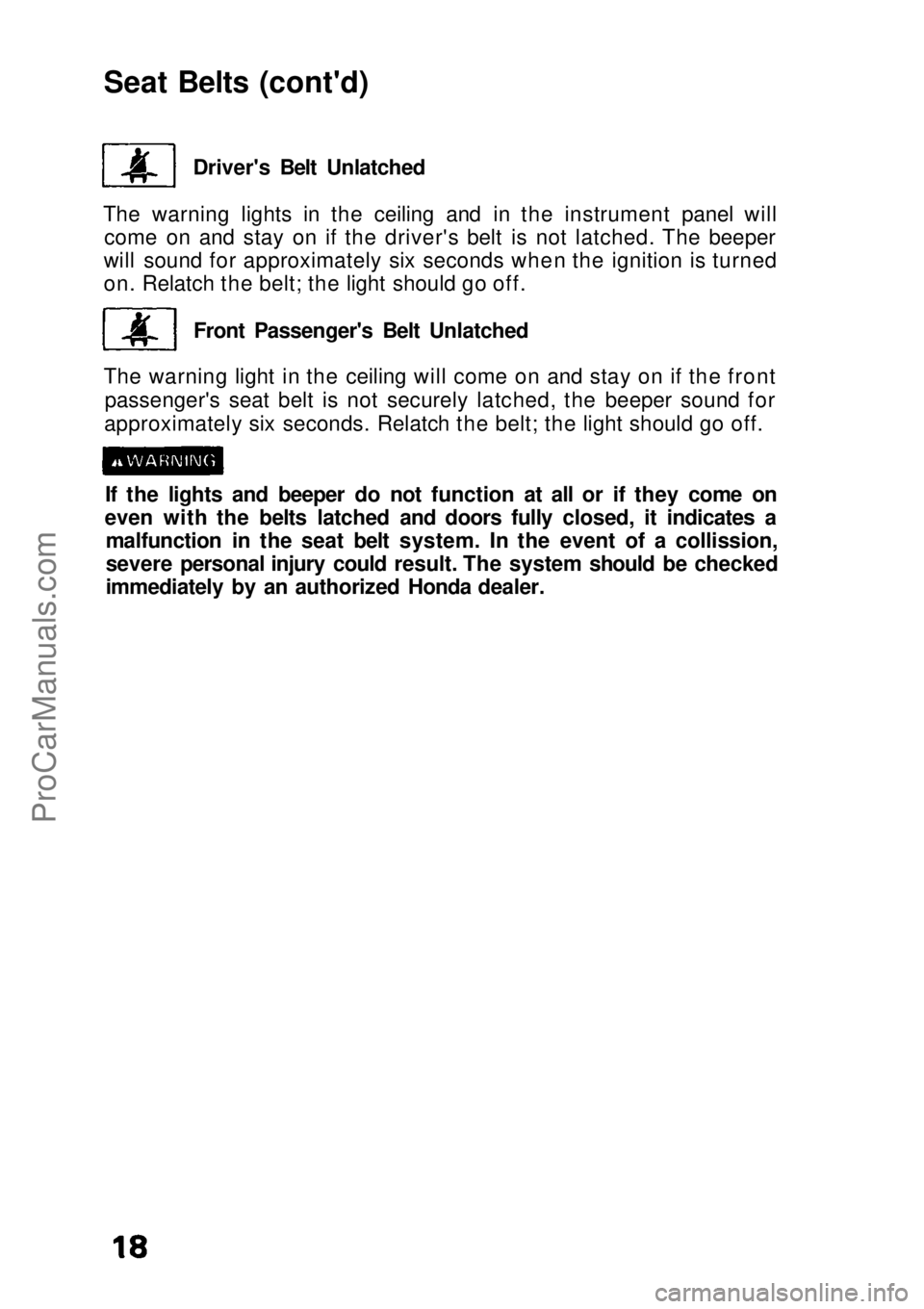



![HONDA CIVIC 1991 Owners Manual Seat Belts (cont'd)
[Hatchback]
Installation of Child Seat
All child restraint systems are designed to be secured by lap belts or
the lap belt portion of a lap-shoulder belt. Children could be e HONDA CIVIC 1991 Owners Manual Seat Belts (cont'd)
[Hatchback]
Installation of Child Seat
All child restraint systems are designed to be secured by lap belts or
the lap belt portion of a lap-shoulder belt. Children could be e](/manual-img/13/57901/w960_57901-22.png)
